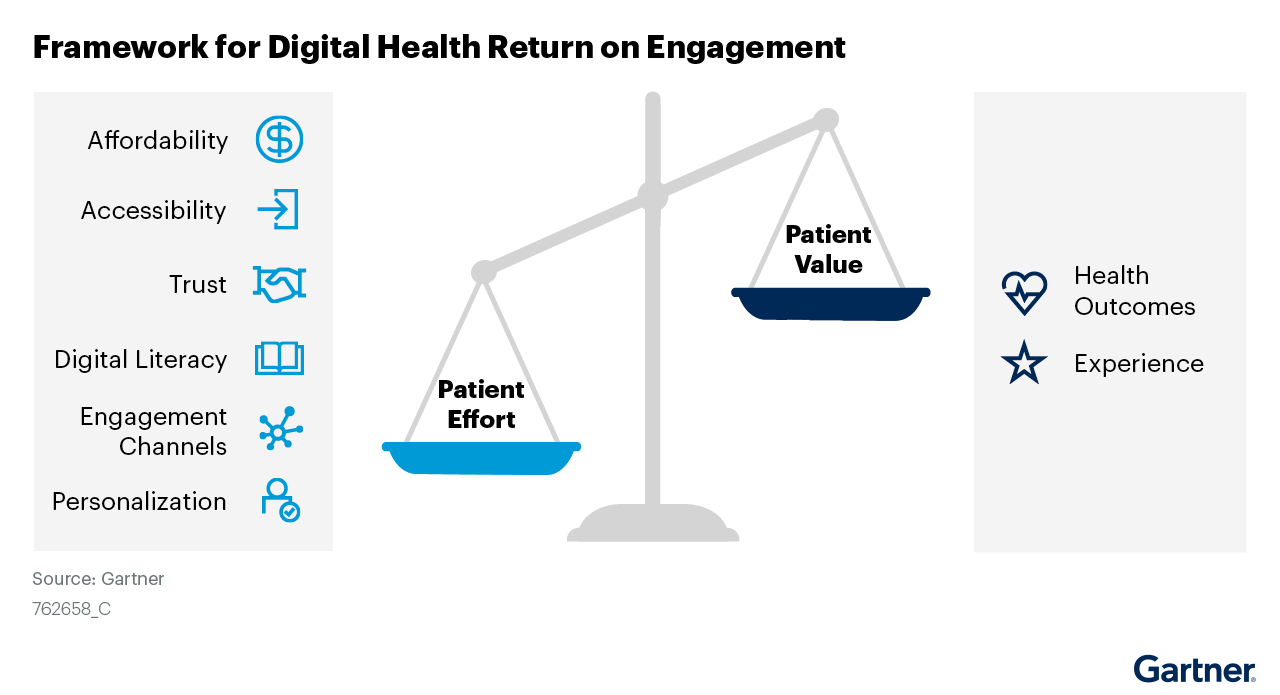The COVID-19 pandemic has highlighted the importance of technology in enabling healthcare delivery. It has also exposed enduring health inequities among patients. As healthcare providers scale virtual care services, they must address their digital health equity and enable the shift from volume- to value-based care. This forms an essential part of their strategic vision.
Gartner research aims to help CIOs make informed digital patient engagement decisions that will maximize virtual care access, outcomes and experience.
Points to address digital health inequality in virtual care services
The Gartner report offers three points to answer the question “How do I address issues of digital health equity across virtual care initiatives?
1. Recognize that virtual care service accessibility and value are inextricably linked to patient engagement with digital technologies
Where the design and requirements of a digital health solution preclude certain individuals or populations from engaging, access to care and perceived value in terms of health outcomes and experience are compromised.
A proactive approach to meeting patients where they are on the digital continuum is needed to tackle digital health inequality. Adopting the practice of what Gartner calls “digital sensitivity”, where digital vulnerabilities are identified and appropriate accommodations made, will ensure all individuals have the opportunity to engage with virtual care services and participate in their care.
2. Optimize digital health return on engagement by minimizing patient effort to engage with virtual care solutions
The Gartner report uses a framework for digital health return on engagement (ROE). This measures the perceived value realized by a patient through the virtual care service relative to the perceived effort required to engage with the enabling digital health solutions.
Gartner reveals that optimizing ROE is essential if the healthcare provider is to sustain patient engagement in virtual care services. To optimize ROE, the patient value must be perceived as greater than the perceived effort to engage with digital care technologies.

Gartner, Quick answer: How to Address Digital Health Equity Across Virtual Care Initiatives. Sharon Hakkennes 3 January 2022
This graphic was published by Gartner, Inc. as part of a larger research document and should be evaluated in the context of the entire document. The Gartner document is available upon request from Stefanini.
3. Six key factors must be addressed to minimize the patient effort to engage with digital health solutions
Patient effort to engage with a digital health solution varies across individuals and populations. According to Gartner “to ensure equitable access to virtual care services, it is incumbent upon healthcare providers to address underlying factors that impact this effort.”
These factors include:
- Affordability of initial and ongoing costs for devices, hardware and network connectivity across target populations.
- Accessibility to technology including broadband availability, device ownership and digital identity to support authentication.
- Trust across all virtual care initiatives so that patients have confidence that their health information will be protected and used ethically, that the technology will work and their care will not be compromised by digital service delivery
- Targeted support and education to bridge any digital literacy gaps for digital health solution users.
- Seamless, consistent and easily switchable engagement channels across multiple touchpoints (such as web, mobile, chatbots and wearables) and interaction modalities (such as voice, text and touch) to meet clinical needs.
- Personalization of digital solutions to meet individual preferences for a specific service at a specific point in time.
Denis Reynders, Global Business Unit Leader at Stefanini Digital Health Services, comments: “This latest Gartner report confirms that healthcare providers must address digital health equity as part of their strategic vision.”
“It is essential to optimize return on engagement of virtual care services in order to minimize digital exclusion. Patients must perceive the value of virtual care services to be greater than the effort required to engage in them.”
“To achieve an optimized ROE, it is vital to focus on six factors that impact a patient’s effort. Addressing affordability, accessibility, trust, digital literacy, engagement channels and personalization will give healthcare providers leverage to optimize patient engagement in their virtual care services.”
Gartner, Quick answer: How to Address Digital Health Equity Across Virtual Care Initiatives, 3 January 2022, Sharon Hakkennes
GARTNER is a registered trademark and service mark of Gartner, Inc. and/or its affiliates in the U.S. and internationally and is used herein with permission. All rights reserved.



















